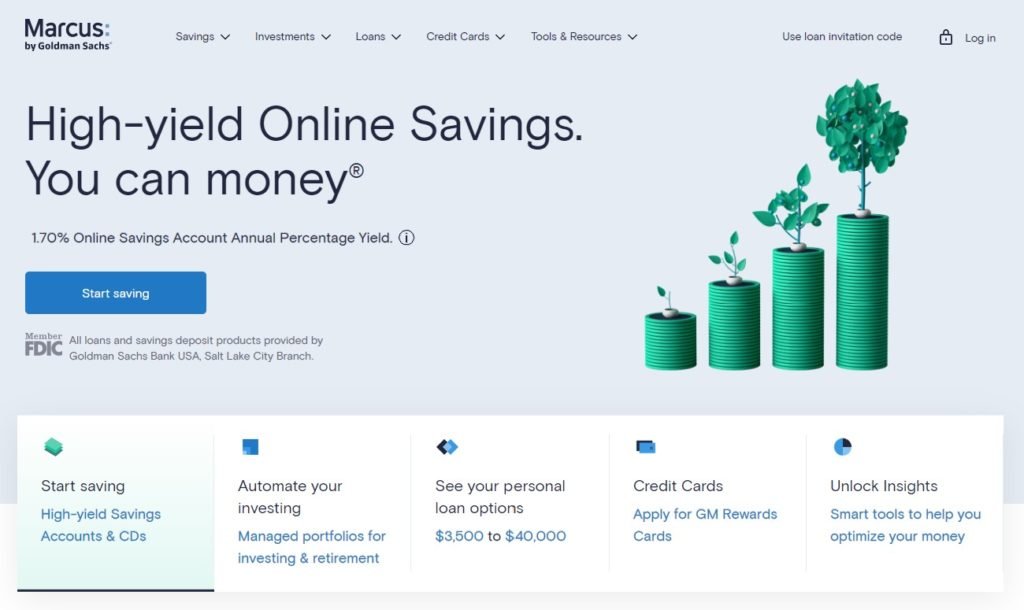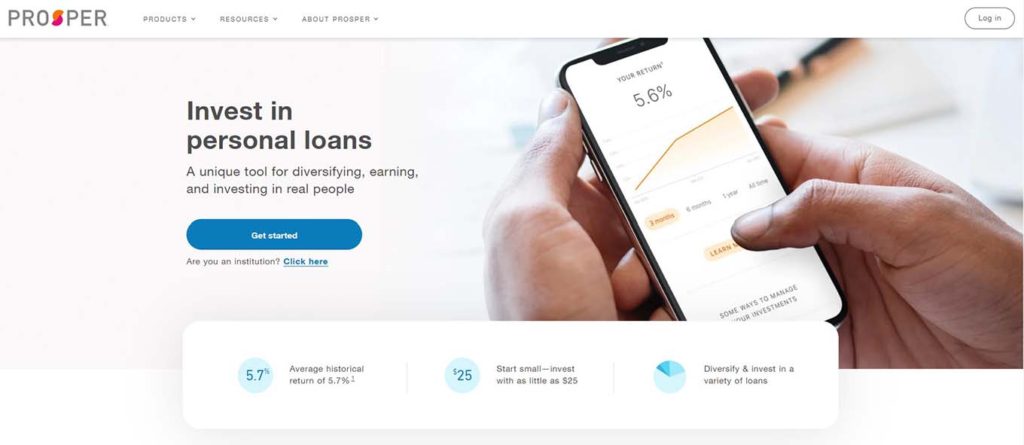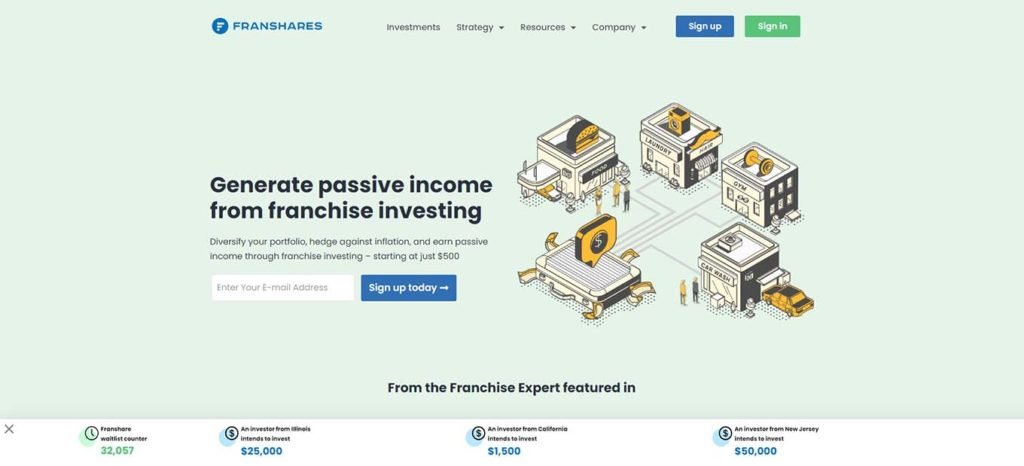If you’re looking for ways to multiply your wealth, income-producing assets are a great place to start. From real estate and stocks to farmland and crypto, many assets generate income on regular and predictable schedules. While you focus on work, family, and sleep, let these opportunities generate cash flow for your portfolio.
Generating passive income from your investments is a core tenet of the FIRE (Financial Independence, Retire Early) movement. If you dream of a financially free lifestyle, here are 18 of the best income-generating assets to consider.
What Are Income-Producing Assets?
Income-producing assets are investments or financial instruments that produce cash flow consistently. This income can come from many sources, including dividends and interest payments, rent, or royalties.
Many investors seek out investments that produce income, rather than growth or appreciation because they yield stable cash flows which can compound over time. Plus, in a diversified portfolio, income-producing assets can enable investors to enjoy regular cash flow without ever selling down the principal investment.
18 Best Income-Producing Assets to Invest In Today
1. Investment-Grade Bonds
Investment-grade bonds are debt securities issued by corporations or government entities that are rated BBB or higher by credit rating agencies. These bonds offer relatively low-risk and predictable income payments, known as coupons, usually every quarter. High-yield bonds, on the other hand, tend to offer higher income payments but also carry a higher risk of default and loss.
Bonds are available to investors through brokerage firms like Charles Schwab or Fidelity. Once you own a bond, it provides a fixed income, typically for a fixed term, and can be held until it matures or is sold on the secondary market.
2. High-Yield Savings Accounts
High-yield savings accounts offer much higher interest rates on your deposited cash than traditional savings accounts. This is because online banks have lower overhead costs, so they can afford to pass along these savings to their customers in the form of extra yield.

The best high-yield savings accounts, like Marcus by Goldman Sachs and Citibank, offer competitive rates of more than 10 times a traditional savings account. If you do not withdraw your initial deposit, you can treat your interest payments as monthly cash flow.
However, even the best high-yield savings account tends to underperform other income-producing assets. It also offers zero potential upside in terms of appreciation. For this reason, high-yield savings accounts are still best treated as savings, rather than investment, vehicles.
3. Real Estate Properties
Real estate is one of the most popular income-producing assets and for good reason. Rent from tenant-occupied properties can provide a consistent income stream, and well-located or well-maintained properties can appreciate in value over time.
The goal of most cash-flow-focused real estate investing is to acquire properties in which the rental income exceeds the total cost of mortgage payments, operating expenses, and some expected level of vacancy. Even if this net rental income is minimal, by owning property, investors also enjoy tax breaks and any increase in the property value.
Investment in real estate comes in many forms. You could invest in single-family homes by yourself or form a syndicate and purchase condominiums, apartment buildings, or commercial properties.
Recently, a trendy new form of real estate investing caters to short-term vacation rentals or STRs. These Airbnb and VRBO businesses receive the many benefits of owning rental property but require a greater level of day-to-day involvement.
4. Real Estate Investment Trusts
Real estate investment trusts, or REITs, are a type of passive real estate investment vehicle that owns and operates income-producing real estate. Like other investments, REITs can be publicly traded on major exchanges or privately held.
By law, REITs must distribute at least 90% of their taxable income to shareholders in the form of dividends. For this reason, REITs offer income-focused investors high dividend yields, as well as the potential for price appreciation and capital gains.
One of the key benefits of investing in REITs is that they offer exposure to a broad range of income-producing real estate assets, including office buildings, shopping malls, apartments, warehouses, and more. This diversification of risk is quite appealing when compared to investing in a single property, of a certain building type, in an individual city.
Also, because REITs are professionally managed, they represent a class of completely hands-off income-generating investments.
5. Real Estate Crowdfunding
A third type of income-producing asset in the world of real estate is real estate crowdfunding. Platforms like Realty Mogul and Fundrise give accredited investors the chance to pool their money and invest in real estate projects that generate income.

The crowdfunding platforms allow you to invest in individual properties or entire portfolios, according to your own risk tolerance and investment goals. Fortunately, they also offer low minimum investment levels and the ability to invest money through an IRA.
6. Farmland
Sites like Harvest Returns enable investors to purchase fractional ownership shares of farmland. Farmland produces passive income that is largely uncorrelated with the broader stock market. This makes agricultural assets a great way to diversify your portfolio and continue building wealth through bear markets and downturns.
Farmland is also an incredible inflation hedge. In fact, Farm Together reports that U.S. farmland has a 70% correlation with CPI. This means that as the cost of living increases, the income-producing potential of farmland also tends to appreciate.
7. Dividend Stocks
Dividend stocks are one of the most widely owned income-producing assets because they are highly liquid, and offer a combination of income and growth. Dividend stocks are equity investments in public companies that have established a record for distributing a portion of their earnings to shareholders.
When evaluating equities for their income potential, it is necessary to understand investment metrics like dividend yield. Dividend yield is simply the percentage of a company’s current stock price that is being paid out in dividends. For example, if a company’s stock currently trades for $100 per share and pays quarterly dividends of $0.50 per share, the dividend yield is 2%.
Dividend-paying stocks tend to pay a fixed amount every quarter. However, the company’s Board of Directors has the discretion to increase, decrease, or even suspend dividend payments as needed. For this reason, understanding the sustainability of a company’s current distribution policy is critical to income investors.
There is also an uncommon, but important distinction between common and preferred dividend stocks. Common dividend-paying stocks only pay a dividend when the company’s Board allows it. Preferred dividend shares, on the other hand, offer predetermined payments that are contractually obligated for a fixed amount of time.
8. Money-Market Funds
Money-market funds (MMFs) are a type of interest-bearing mutual fund that focuses on investing in low-risk, short-term debt securities. Similar to high-yield savings accounts, MMFs generate income according to the interest rates of their investments, but they do not appreciate in value.
While MMFs can generate consistent cash flow, the yield is often quite low in percentage terms. Thus, most investors use these funds as a temporary place to store cash in between more long-term investment opportunities.
9. Certificates of Deposit
Certificates of deposit (CDs) are another option for income investors seeking safe, interest-bearing investments. Banks issue CDs and typically offer higher interest rates on them than money-market accounts. However, they also tend to have higher minimum balance requirements.
The primary benefit of CDs is that they offer guaranteed income. When you purchase a CD, you are agreeing to keep your money deposited in the account for a fixed period of time, typically between 3 months and 5 years. In exchange, you receive a fixed return, with higher interest payments for longer-term deposits.
If you need to access your money before the CD matures, you will typically be subject to a penalty. For this reason, CDs are best suited for income investors with longer time horizons.
10. Annuities
Annuities are financial contracts, between an insurance company and an individual, that promise to make periodic income payments. After depositing funds, annuity payments can begin immediately or after a deferral period. These periods may last between two and ten years, and carry a surrender fee (like a CD) if redeemed prematurely. Annuities can also be structured for the lifetime of the beneficiary, or a fixed number of years.
There are three main kinds of annuities:
- Fixed rate: A fixed payment is determined at the time of signing the contract
- Variable rate: Payments fluctuate based on the performance of the investments inside the annuity
- Indexed rate: Payments fluctuate according to the performance of a benchmark index like the CPI or S&P 500
11. Peer-to-Peer Lending
Peer-to-peer lending, P2P lending, or “crowdlending” is a way to lend money to other individuals in exchange for some future recurring cash flow. LendingClub and Prosper facilitate this age-old lending method with modern technology.

As an investor, you can earn passive income with as little as $25 to start. Either invest in a basket of diversified loans or select the loans you’d like to fund yourself. According to Prosper, their average historical return is 5.7%.
12. Private Equity Investing
Private equity firms pool money from accredited investors and use the funds to buy stakes in companies, real estate, or other assets. These firms then work with the companies to cut costs and increase their value before flipping them for a profit.
Unlike most other income-producing investments, private equity investing can be quite risky. However, it can also generate incredible returns, especially for investors who are willing to accept more risk. While you may not have as much capital as Blackstone, the world’s largest private equity firm, you can still get in on the action by investing in a private equity fund.
These funds are available to accredited investors and typically require a minimum investment of $250,000 to $1 million. Although this only opens the door to high-net-worth individuals and institutional investors, some newer firms are beginning to open up their funds to retail investors as well.
13. E-Commerce Entrepreneurship
Whether it’s a side hustle or your full-time gig, an ecommerce business can be an income-producing asset depending on how you structure it. You’ll need to create a website or online store and start selling products or services. But once you get the ball rolling, it has the potential to generate income on autopilot.
Digital products, for example, only have to be made once but they can be sold an unlimited number of times. You can also sell physical products, but you’ll have to deal with inventory, shipping, and customer service. At this point, e-commerce may turn into a job rather than an income-producing asset.
If your goal is to reach financial freedom and generate passive income, e-commerce is an excellent way to earn money. But be especially thoughtful about how you plan for automation and sustainability, which often work in opposite ways.
14. Royalties
You may have heard that artists earn royalties every time their work is played on the radio, used in a movie, or sold as a digital download. But you don’t have to be a musician or filmmaker to earn income from royalties.
If you create any kind of Intellectual Property (IP), such as a patent, trademark, or copyrighted material, you can earn money from it for the duration of its legal life. That’s typically the life of the creator plus 70 years. So if you wrote a book today, your heirs would continue to collect royalties long after you’re gone.
Alternatively, you can even purchase the rights to other people’s royalties. Artists and other creators often sell the rights to their royalties from a specific product — like a book, movie, song, image, or work of art — to investors. This approach allows you to own income-producing assets in the form of patents, copyrights, natural trusts, land tracts, and more.
15. Decentralized Finance
The advent of cryptocurrency has given way to DeFi, or decentralized finance. DeFi offers an alternative to traditional financial products and services, such as loans, exchanges, and savings accounts.
Unlike traditional finance, DeFi is built on the blockchain, with most transactions taking place through Ethereum. DeFi powers income-generating assets beyond the word of fiat currency. Typically, users earn yield by providing liquidity or loaning out their crypto assets in exchange for a promised return.
As with all things crypto, do your own research (really) before risking much of your portfolio in DeFi. Even as crypto enthusiasts here at The Money Maniac, we urge caution. The epic rise and fall of Terra Luna illustrate this point.
16. Non-Fungible Tokens
Non-fungible tokens (NFTs) are another type of income-producing asset available through crypto. NFTs represent ownership rights to a particular media item or creative asset, like a song or an image. These tokens can generate income in two different ways: licensing and resale.

Mainstream NFTs can be licensed for use in music videos, video games, or digital art. This means that NFT owners can earn money by capitalizing on the image and status of their digital assets. NFTs also pay a royalty to their original creator on all secondary market transactions. This mechanic enables creators to profit perpetually, as long as their creations remain relevant and valuable.
17. Business Ownership
Businesses are the most powerful wealth generator in existence. With the potential for income generation, value appreciation, and tax breaks, it’s no wonder that most millionaires and billionaires are business owners.
Of course, business ownership is also one of the riskiest and most difficult income-producing assets on this list. Businesses require time, energy, skill, money, and often, a little luck. But if you can beat the odds and build a successful business, the rewards are life-changing.
To get started on the journey of business ownership, check out our step-by-step guides on topics like how to start a vending machine business or how to start a candle business.
18. Franchise Investing
Finally, if you don’t want to do all the work of creating your own business from scratch, consider investing in franchises instead. Franshares offers a passive way to generate income from franchise investments starting as low as $500.

Franchises are generally cheap to start and straightforward to operate, so they provide excellent cash returns. Plus, they have little correlation with the stock market, so they are yet another category of income-producing assets that offer diversification.
How Do Income-Generating Assets Impact Taxes?
The extent to which an income-generating asset is taxed depends on whether the IRS considers it income or an asset. Investopedia explains the difference between the two as follows: “income is money that is being received, whereas an asset is something—typically money or property—that a person is already in possession of.”
The IRS considers most forms of income taxable. This includes:
- Salaries and wages
- Bonuses and tips
- Unearned income
That last item, unearned income, includes income from interest, dividends, or inheritances. In other words, unless otherwise tax-exempt (such as gains from tax-deferred accounts like Traditional IRAs), income received through income-generating assets is taxable.
The income-producing assets themselves are generally only taxable when you sell them, at which point you may be charged capital gains tax on the assets, depending on how long you held them. To reduce the amount of taxes you must pay for income generated through income-producing assets, hold them in a tax-deferred account—like an IRA, 401(k), 403(b), or 457 plan.
Compound Interest
One of the best and fastest ways to maximize your wealth creation using income-generating assets is to reap the benefits of compound interest. With certain assets, like dividend stocks and REITs, you can increase your rate of return by reinvesting the income rather than withdrawing it. That way, you increase your principal and begin earning interest on your interest earnings.
The earlier you start saving and investing, the greater the benefit from compounding interest will be. That’s why it’s important to start saving for retirement and accumulating income-producing assets as early as possible.
Related reading: How To Supercharge Your Portfolio With Factor Investing
Frequently Asked Questions
Income-producing assets are investments that generate some form of regular cash flow, in the form of interest, dividends, or rent payments. These assets can include everything from bonds and stocks to real estate and small businesses.
The two keys to building assets on a tight budget are: start early and always pay yourself first. These principles make sure that compound interest can work in your favor as long as possible, and life’s hiccups won’t get in the way of you reaching financial freedom.
Many income-producing assets can generate monthly income, including annuities, dividend stocks, bonds, real estate properties, and DeFi. No matter which asset you choose to pursue, always remember to reinvest your income to maximize your returns.
Three of the best wealth-creating assets are small businesses, real estate, and dividend stocks. All of these examples appreciate in value, provide a regular income stream, and offer tax advantages.



